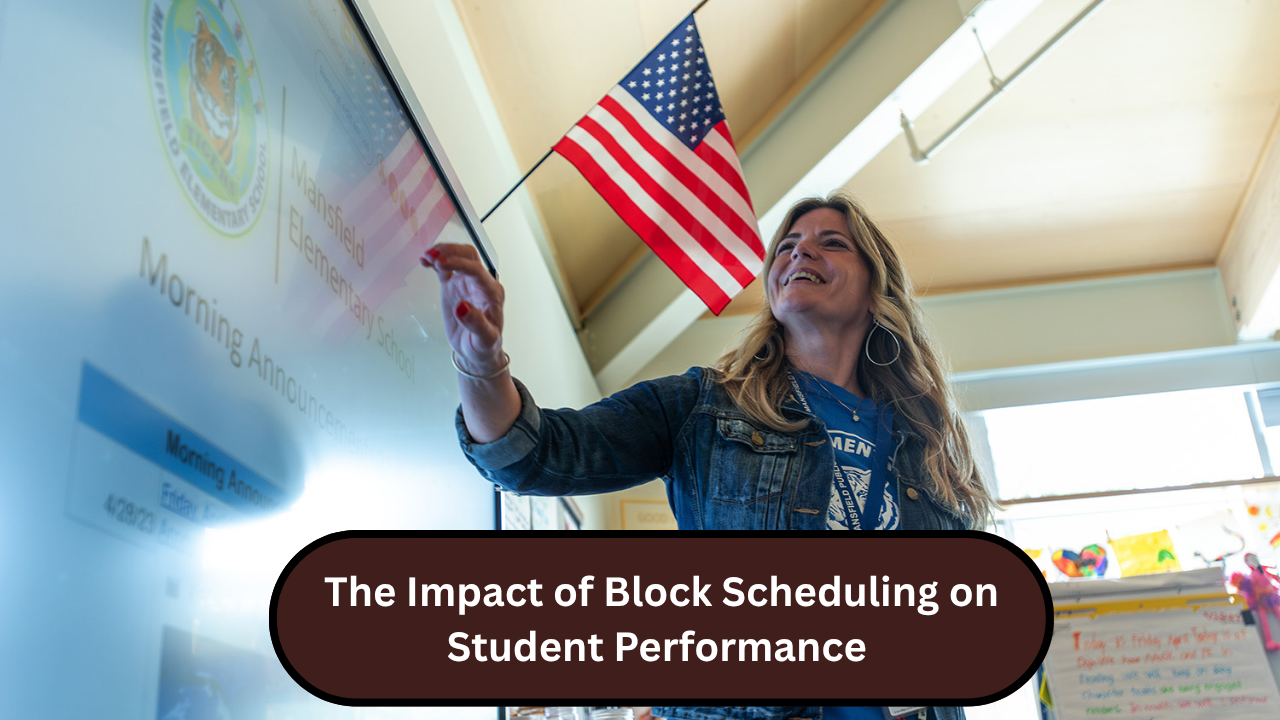School schedules have a big effect on how students learn and perform. Traditionally, students have followed a daily routine of seven or eight short classes. But over the past few decades, many schools in the U.S. have switched to block scheduling—a different way of organizing the school day. In block scheduling, students attend fewer classes per day, but each class lasts longer—usually around 90 minutes. Supporters believe it gives students more time to understand lessons deeply. Critics worry about attention spans and missed learning if students are absent. So, how does block scheduling really impact student performance? Let’s explore the benefits, challenges, and results of this unique approach.
What Is Block Scheduling and How Does It Help?
Block scheduling usually means students have four longer classes per day instead of eight shorter ones. These schedules may rotate every other day (A/B blocks), or follow a semester format where students complete a full course in half the year. This gives teachers more time to explain topics in detail, hold group activities, and allow students to focus better on one subject at a time.
For many students, this system helps reduce daily stress. Instead of juggling eight subjects, they only focus on four. They have more time to ask questions, complete in-class assignments, and understand the material. This is especially helpful in subjects like science, where labs and experiments need more time. Students can also develop stronger relationships with teachers due to the longer interaction during each class. Some research shows that students in block schedules may perform better in writing, science, and project-based assessments.
What Are the Challenges of Block Scheduling?
While block scheduling has benefits, it’s not perfect for everyone. One major concern is the risk of losing valuable learning time if a student misses a single class. In traditional schedules, missing one class means losing about 45 minutes; in block scheduling, it can mean missing 90 minutes of instruction.
Some students also find it hard to stay focused for longer periods. Attention spans vary, and sitting through a long lecture or lesson can become tiring. If a teacher does not plan enough activities, students may become bored or distracted. Another challenge is that subjects like math often require daily practice to build skills. With block scheduling, students might go 48 hours without practicing, which can hurt their progress.
Block scheduling has changed the way many American high schools deliver education. For some students, it offers a better, more relaxed way to learn and understand subjects deeply. For others, it can lead to missed opportunities and long gaps between lessons. Like any system, its success depends on how well it is implemented, how teachers use class time, and how students adapt to the structure. Schools must consider the needs of their students before choosing a schedule. With the right training and support, block scheduling can be a powerful tool to improve student learning and performance.
FAQ’s:
Q1. What is block scheduling in schools?
Block scheduling is a system where students have fewer classes each day, but each class lasts longer—usually 90 minutes. It replaces the traditional 45–50 minute periods with extended time blocks.
Q2. Does block scheduling help students learn better?
In some cases, yes. Students often have more time to understand topics, ask questions, and work on activities. However, it depends on the subject and how the time is used by teachers.
Q3. What are the disadvantages of block scheduling?
Some disadvantages include longer gaps between classes, difficulty staying focused, and missing more content if a student is absent. Math and foreign language subjects may suffer if not taught frequently.
Q4. How does block scheduling affect grades and test scores?
Studies show mixed results. Some students do better in writing and science, while others may struggle in subjects that require daily practice, like math.
Q5. Is block scheduling used in all U.S. schools?
No. Block scheduling is used in many high schools but not all. Some schools use a mix of traditional and block schedules depending on their needs and goals.
